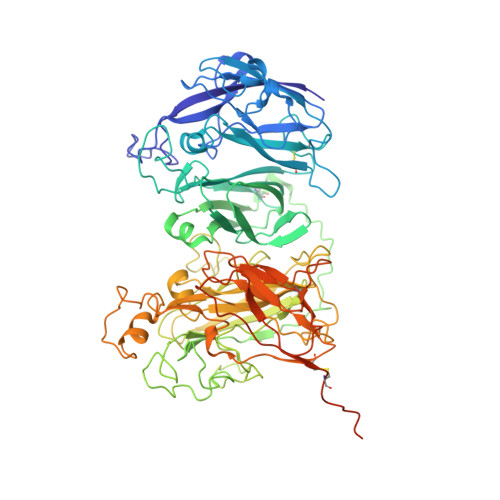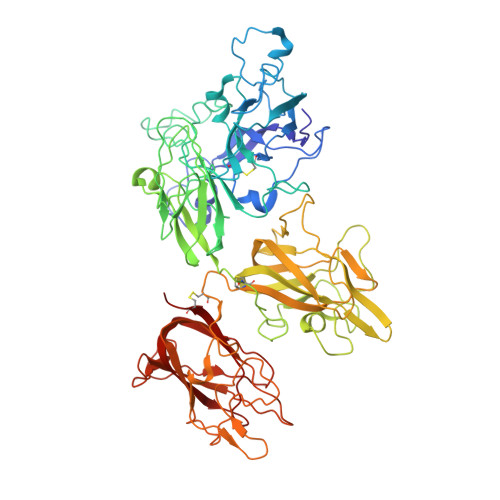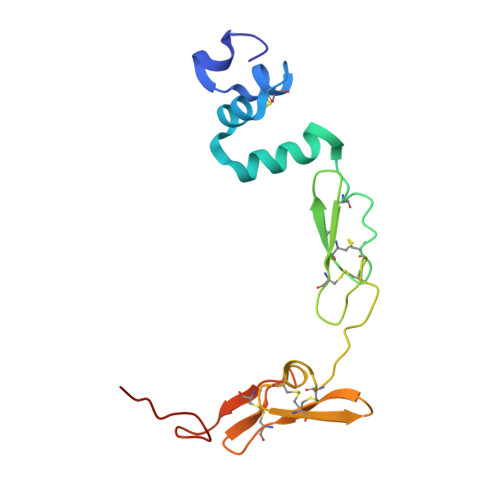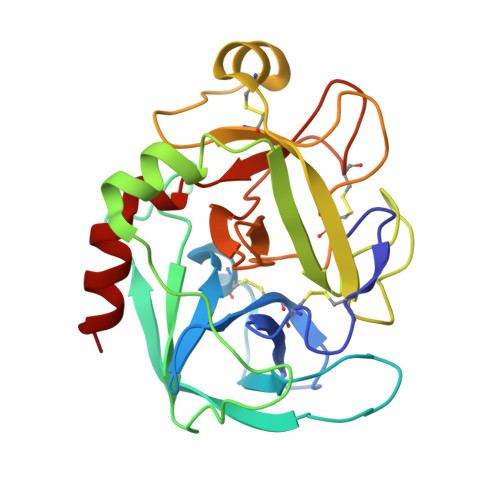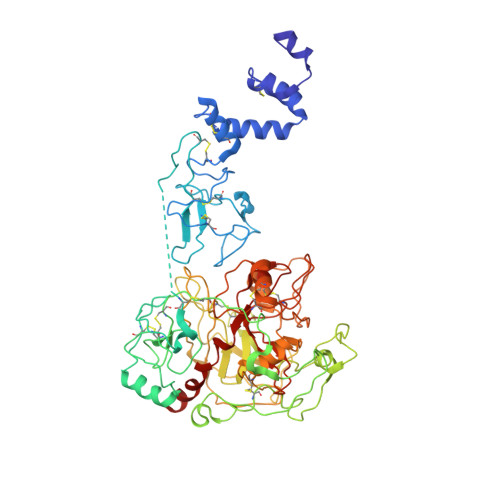The Prothrombin-Prothrombinase Interaction.
Stojanovski, B.M., Mohammed, B.M., Di Cera, E.(2024) Subcell Biochem 104: 409-423
- PubMed: 38963494
- DOI: https://doi.org/10.1007/978-3-031-58843-3_15
- Primary Citation of Related Structures:
9CTH - PubMed Abstract:
The hemostatic response to vascular injury entails a sequence of proteolytic events where several inactive zymogens of the trypsin family are converted to active proteases. The cascade starts with exposure of tissue factor from the damaged endothelium and culminates with conversion of prothrombin to thrombin in a reaction catalyzed by the prothrombinase complex composed of the enzyme factor Xa, cofactor Va, Ca 2+ , and phospholipids. This cofactor-dependent activation is paradigmatic of analogous reactions of the blood coagulation and complement cascades, which makes elucidation of its molecular mechanism of broad significance to the large class of trypsin-like zymogens to which prothrombin belongs. Because of its relevance as the most important reaction in the physiological response to vascular injury, as well as the main trigger of pathological thrombotic complications, the mechanism of prothrombin activation has been studied extensively. However, a molecular interpretation of this mechanism has become available only recently from important developments in structural biology. Here we review current knowledge on the prothrombin-prothrombinase interaction and outline future directions for the study of this key reaction of the coagulation cascade.
- Edward A. Doisy Department of Biochemistry and Molecular Biology, Saint Louis University School of Medicine, St. Louis, MO, USA.
Organizational Affiliation:








